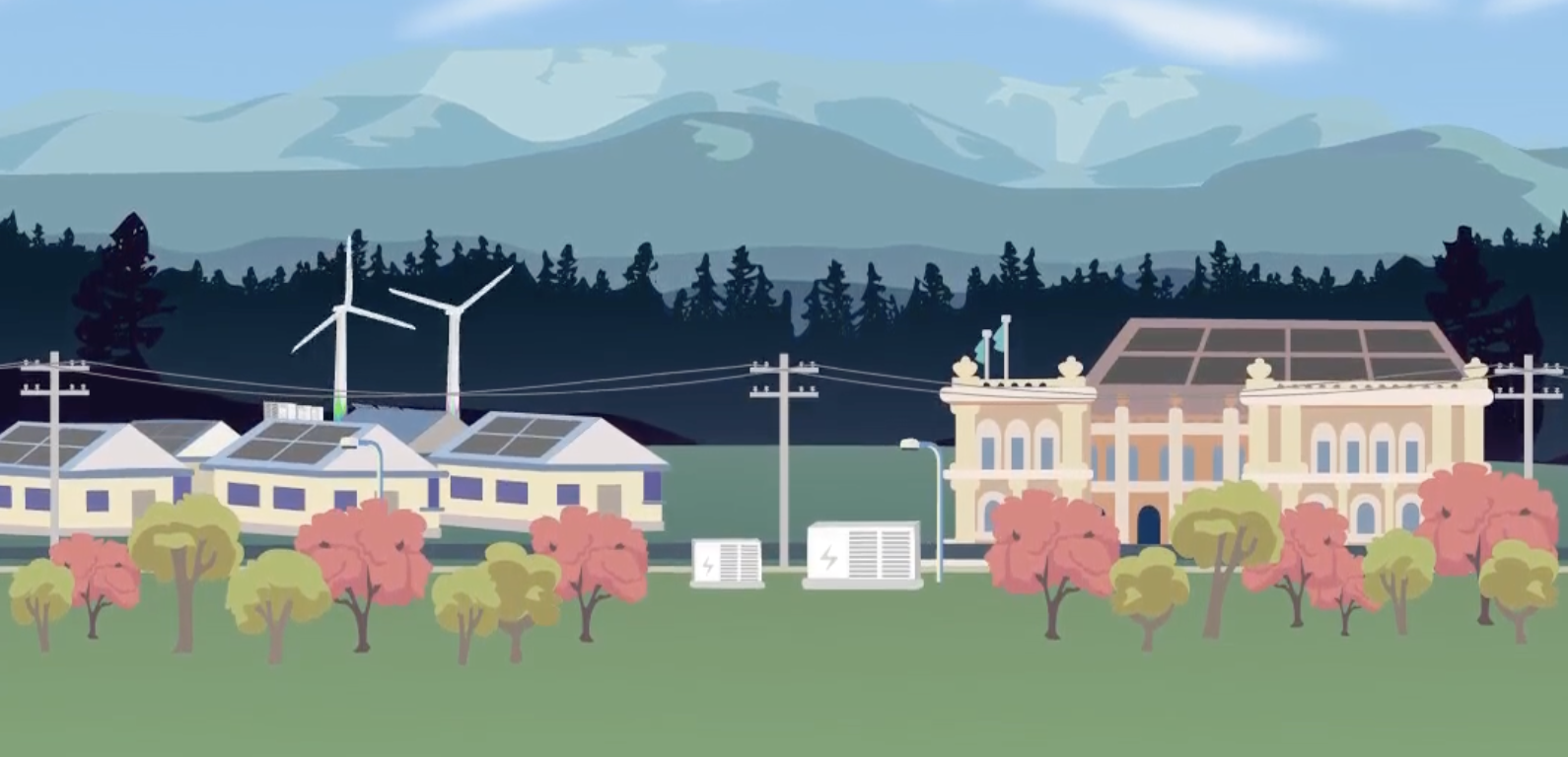Neighbourhood Battery Initiative - Community Sparks
This project developed a greater understanding of how regional communities and councils can play a greater role in implementing neighbourhood batteries.
The following community drivers were identified in the social feasibility study:
These locations were selected according to the following criteria:
118 transformers in the six regional locations, servicing 2,090 homes and 248 businesses, were each subjected to a hundred simulations based on different solar uptake scenarios, battery sizes, and control profiles, making a total of 11,800 simulations.
The DELWP-funded project was a partnership between CVGA, Hepburn Energy, Hepburn Shire, Ballarat City, City of Greater Bendigo, Central Goldfields Shire, Gannawarra Shire, Swan Hill Rural City, Mt Alexander Shire, Mildura Rural City, Macedon Ranges Shire and Powercor.
Date of completion: 30 September 2022.
The following community drivers were identified in the social feasibility study:
- Unlocking more solar export on low voltage distribution networks that are increasingly constrained;
- Increasing the energy independence and self-sufficiency of communities
- Improving network reliability and resilience
- Unlocking new financial value for individuals and communities to help maintain energy affordability
These locations were selected according to the following criteria:
- They are representative of many locations in the Shire in regards to hamlet scale (Wheatsheaf), village scale (Lyonville and Glenlyon), and town scale (Clunes).
- Three of these locations were identified by Powercor to be of interest on account of grid reliability issues in a 2019 study for Hepburn Z-NET. Clunes was experiencing the highest solar export limitations in the Shire.
- There were active community groups with a strong desire for community batteries in Wheatsheaf, Lyonville and Glenlyon.
- These areas suffered long-term outages during the 2021 storms.
- Two other regional locations, Ballan and Pomonal, were also selected for analysis in collaboration with the Grampians Power Hub.
118 transformers in the six regional locations, servicing 2,090 homes and 248 businesses, were each subjected to a hundred simulations based on different solar uptake scenarios, battery sizes, and control profiles, making a total of 11,800 simulations.
The DELWP-funded project was a partnership between CVGA, Hepburn Energy, Hepburn Shire, Ballarat City, City of Greater Bendigo, Central Goldfields Shire, Gannawarra Shire, Swan Hill Rural City, Mt Alexander Shire, Mildura Rural City, Macedon Ranges Shire and Powercor.
Date of completion: 30 September 2022.
Key Findings
- The network issues identified by communities were corroborated by the network data. Without network upgrades, the reliability issues and solar constraints will hamper community aspirations for higher solar penetration and energy independence;
- Neighbourhood batteries can offer some soft network benefits and address some issues identified by the community. However,
- No sites were found to be close to being financially viable for a project developer dependent on wholesale & tariff arbitrage and FCAS;
- No sites were found to be economically viable even after taking into account the soft network benefits to the distributor (e.g. by reducing the cost of upgrading the network in some instances) or to end customers (e.g., by enabling new or extra solar capacity), the increased energy independence to communities, and the improved grid reliability.
The main factors behind the lack of financial and economic viability are the large Capex and Opex costs of neighbourhood batteries. In some cases, upgrading transformers to a larger size could address issues like solar export constraint and energy independence. In addition to obtaining government support, distributors could also enable neighbourhood batteries to become more economically viable by making payments in recognition of the network services they provide, such as delaying grid upgrades and enabling more solar. Another option for distributors to support neighbourhood batteries is to release more attractive network tariffs that would reward energy customers for using locally produced energy
Resources for Community Groups
As part of the Community Sparks project, Hepburn Energy have produced a very accessible booklet and animation for community groups exploring neighbourhood batteries in their region.
Behind the Meter: Technical & Financial AnalysisVippy has assessed the technical and financial viability of a range of potential behind-the-meter battery solutions at 3 sites in regional Victoria. Most are not viable when assessing financials alone, but if certain conditions are met, some of the projects could be worthy of further consideration.
|
In front of the Meter: Technical & Financial AnalysisOrkestra (formerly Vippy) conducted a technical and economic analysis of prospective in-front-of-the-meter battery sites across 6 small Victorian communities: Clunes, Wheatsheaf, Glenlyon, Lyonville, Ballan, and Pomonal.
|
Social FeasibilityIn order to learn more about community
interests and needs, Hepburn Energy delivered a social feasibility study based on a detailed survey with >250 respondents and a focus group with 15 participants |
Project Partners |
|

